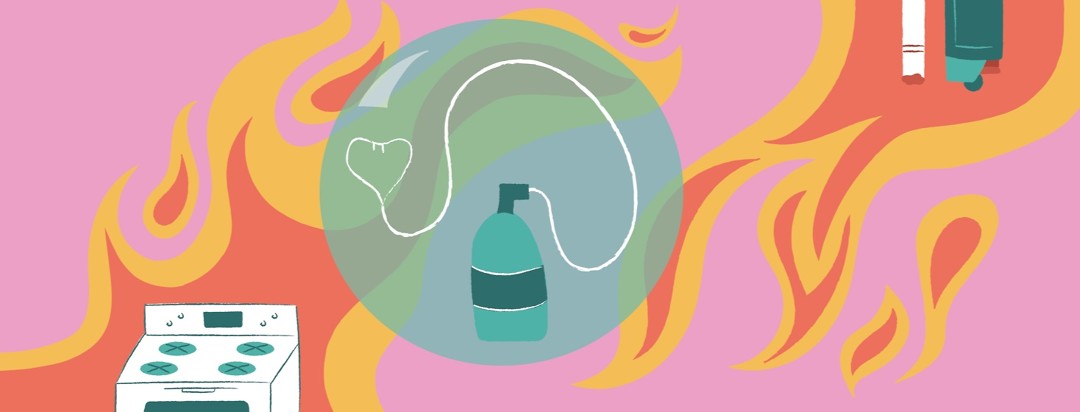Oxygen Users: Be Careful Around Open Flames
Many people in this community definitely benefit from oxygen therapy. Studies show that, for those who need it, oxygen therapy can help people with COPD live better and longer. It’s one of the few drugs proven to prolong life.1
Still, if you wear it, it’s important to understand that oxygen can support a flame. You’ll definitely need to be careful around anything that can ignite a flame.
Oxygen and flammability
It’s the result of a chemical reaction called combustion. You have to have fuel, which may be wood or gas. When this fuel is heated to a certain temperature, a chemical reaction occurs. This is called combustion. The end result is heat and fire.2
Oxygen is an oxidizer. It supports a flame. It makes a flame burn brighter. It’s also needed for combustion to occur. Take away the oxygen and the flame will stop burning. Add more oxygen to the mix and you’ll get a larger flame. Or, potentially, you might have an explosion.2,3
What does that mean for COPD patients?
Most people with COPD benefit from a small amount of oxygen. Most people with COPD can get by with using a simple nasal cannula.
The opposite end of the cannula is connected to an oxygen source. This is usually an oxygen tank, concentrator, or liquid oxygen source. These store or make 100% oxygen, or pure oxygen. Experts note that any oxygen concentration greater than 35% can support a flame.1, 3
The flow from the source is usually set at 2-3 LPM. Although, occasionally masks and transtracheal oxygen is used. Inhaling supplemental oxygen is generally considered safe and effective when indicated. Still, it’s pure oxygen you’re inhaling and it certainly is capable of supporting a flame.
How can I prevent fires while using oxygen?
So, you’ll want to keep it away from anything flammable. This includes lit cigarettes. Do not smoke if you are wearing your oxygen. Be extra careful around stovetops and ovens. Be careful around space heaters or other devices that produce heat.
I have witnessed a few of these incidences in the ER. Sometimes it happens as a result of lighting a cigarette. But, I have also seen it as the result of someone getting to close to the flame on a gas stove.
What is a flash burn?
The scientific name for it is “flash burn.” This is the result of a flash of fire or explosion that causes “superficial” burns to the face. It may also singe eyebrows and nose hairs. The nostrils may have soot in and under them.1
The burns are treated as appropriate. Sometimes these patients are admitted for a few days for observation and treatment. A few are transferred to burn units. Although, I have seen patients treated and discharged home that same day. They are discharged after being educated about oxygen safety.
Continuing to smoke with home oxygen
Interestingly, studies show that upwards of 14-51% of people prescribed home oxygen therapy continue smoking. This is despite people using home oxygen therapy being told not to smoke. Some of these patients will at some point suffer from flash burns as a result. Although, experts say they are unaware of the actual number of flash burns due to cigarette smoking. This is because they presume the vast majority do not report their injuries.1
Burns have increased over the years
Overall, the number of home oxygen-related burns has been on the rise over the past several years. This may be due to the increased use of home oxygen for COPD and other lung diseases. Still, such burns are completely preventable. The best path to preventing them is with a proper education.1
Be mindful of your surroundings
Oxygen is definitely considered beneficial for those who need it. It’s also safe and non-flammable. Still, it’s important to be aware that it can support a flame. So, it’s best to not smoke and stay safe around anything that may produce a flame.

Join the conversation